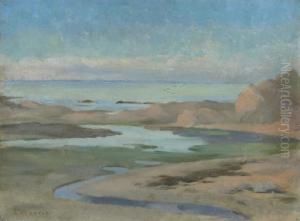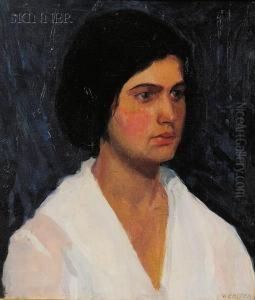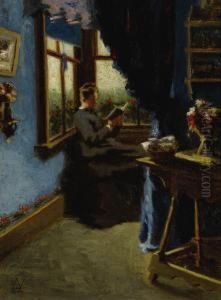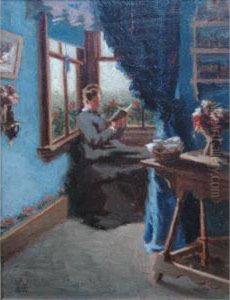Edwin Ambrose Webster Paintings
Edwin Ambrose Webster was an American painter known for his work in watercolors and oils, and for his role as an art educator. Born on July 5, 1869, in Chelsea, Massachusetts, Webster developed an interest in art at an early age and pursued his passion through formal education. He studied at the Massachusetts Normal Art School in Boston, which later became the Massachusetts College of Art and Design. During his studies, he was heavily influenced by the Boston School of painting, a group known for combining impressionist light and color with a more traditional approach to figuration.
After completing his education, Webster traveled to Europe, which was a common practice for American artists at the turn of the 20th century. His travels took him to France, Spain, and Italy, where he was exposed to the work of the Old Masters and the contemporary art movements of the time. These experiences greatly influenced Webster's artistic style, and upon returning to the United States, he began to incorporate the techniques and color palettes he had observed abroad into his own work.
Webster was also a dedicated teacher and believed strongly in the value of art education. He taught at various institutions, including the Massachusetts Normal Art School and the Fenway School of Illustration. Additionally, he founded the Webster Art School in Boston, where he instructed students in painting and drawing. Webster's teaching philosophy emphasized the importance of direct observation and plein air painting, encouraging his students to work outdoors and engage directly with the landscape.
Throughout his career, Webster exhibited his work widely. He participated in exhibitions at the Boston Art Club, the Pennsylvania Academy of the Fine Arts, and the Corcoran Gallery of Art, among others. Webster's paintings often depict landscapes, seascapes, and scenes from his travels, characterized by vibrant colors and a loose, expressive brushwork that suggests the influence of Impressionism.
Edwin Ambrose Webster's contributions to American art were cut short by his untimely death on January 27, 1935. Nevertheless, his legacy survives through his paintings and the impact he had on his students. Webster's works are held in various collections and continue to be appreciated for their vibrant energy and the artist's dedication to capturing the subtleties of light and color.




